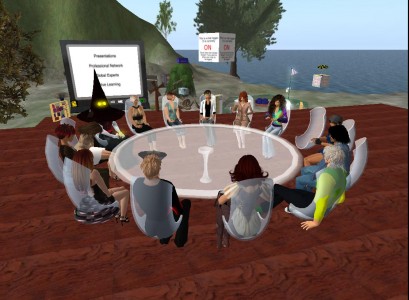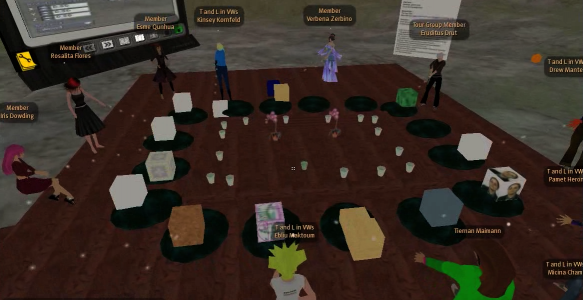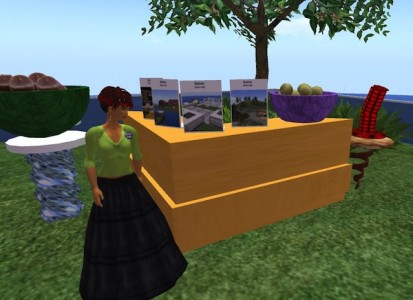As we wrote before, virtual reality is transforming education in many different ways. But one of the most powerful is that it helps students develop a motivation for learning through virtual rewards that provide real value to the learners, a sense of personal or group success, and personal autonomy.
Virtual rewards can replace traditional grades and badges and can dramatically improve student motivation when they are aligned with educational goals.

“Until recently teachers had moved away from rewards in the classroom, because they are associated with behaviorism and because they are generally not used effectively,†Jane Wilde, an instructor at Marlboro College and an expert in using games and simulations for learning, told Hypergrid Business.
One problem is that rewards can too often train students to study for the sake of getting the reward, rather than for the sake of the intrinsic benefits of the learning itself.
“Rewards are only one part of a successful learning experience,†said Wilde. “If the content is not interesting and important, if the learning activities are not engaging, if the learners’ needs and challenges are not supported, if there is not a social component to the learning process, any system of rewards will fail.â€
According to Wilde, our traditional system of assessment is quite punitive rather than rewarding. The fear of lower grades, for example, reduces student willingness to take risks.
Virtual simulations have the potential to change this dynamic.
“Our interest in harnessing rewards has been reignited by the successful use of rewards in games,†Wilde said.
Career expert Daniel Pink recently addressed this issue in a TED talk, where he suggests moving beyond a carrot-and-stick approach to motivation which, he says, narrow the focus and restrict possibilities.

1. Real value
Research suggests that extrinsic rewards, such as grades, are effective at motivating students only to a certain degree. Intrinsic motivation, however, is a much more powerful instrument if it can be leveraged effectively.
By tapping into intrinsic motivation, virtual rewards provide students with real value that relates to their interests and the goals of learning.
According to Wilde, the successful rewards are those that motivate learners to complete the assignment and explore farther. They contribute to the narrative of a game-like simulation, quest or mission. It is important that the rewards be related to the activity or the goal, she said.
“Coupons for real but unrelated things are less valuable as rewards than, say, a virtual key to the next level of activity,†she said. “Virtual currency, clothing, gear, potions that can help the learner move forward are often successful rewards. Experience Points that unlock new levels, and ultimately determine overall success in the course can be motivating.â€

Intrinsic motivation is built around meaningful things. Neither the form of a prospective extrinsic reward, nor the size of it can become a single goal of completing an assignment.
For example, in one MIT study, students performed a set of game-based experiments that involved creativity, motor skills and concentration in return for pay — and higher incentives actually led to worse performance.
2. Personal accomplishment
If a virtual simulation is appropriately challenging, a student can experience a sense of personal accomplishment just from completing the challenge.
But virtual rewards that recognize the accomplishment can help underscore that success.
“Acknowledging learner accomplishments of increasingly complex work is a characteristic of a successful reward,†said Wilde of Marlboro College. “Badges can be motivating if they acknowledge something specific to the individual learner.â€
A known reward for the personal accomplishment excites people, but what really reignites students’ interest to the subject, is an uncertain reward, pitched at the right level of uncertainty, according to gaming theorist Tom Chatfield.
The element of uncertainty can bring even more value to rewarding students’ efforts.
“The unexpected reward for a personal achievement tells the learner that the teacher knows her, is paying attention to her, recognizes her unique efforts and skills,†said Wilde.
In addition, rewards for team performance lead to better performance for both the team and individuals. Presumably, this is because sharing accomplishments within the group increases motivation.
The study Individual and Group Motivation in the Workplace has found that as people were rewarded for their individual performance, the team’s performance ability worsened. On the other hand, the more people were rewarded for their performance on a team, then the team’s overall performance increased.
“Gamers are familiar with gaining rewards for team success and know that each player must do their best for the benefit of the whole,†said Wilde. “School culture has been competitive in the past and has not supported the group ethic.â€
However, students may be uncomfortable with working toward group rewards at first, because of their past experience of punitive grading systems.
“They may initially be worried that a team member may bring their grade down,†she said.

One solution, she said, is rewarding both individual and group successes in order to reassure each learner that their strong efforts will be acknowledged, and to promote a sense of responsibility to the group’s success.
“As students become familiar with reward-based assessment rather than punishment-based assessments, group rewards become highly motivating,†she added.
3. Learner Autonomy
Autonomy is a desire to be self directed and to have freedom of choice. That requires a set of personal qualities including confidence, motivation, taking and accepting responsibility, and the ability to take initiative.
Virtual learning environments that allow for creativity can motivate students by letting them express themselves. Virtual reality provides opportunities for the learner to take control of their learning by giving them a choice of possible solutions to the task.

“Given the opportunity, students in virtual environments have the ability to express their creativity in ways that aren’t typically available in a traditional classroom, and that opportunity to be creative can be its own reward,†said Chris Collins, president of AvaCon, an organization that promotes the development of the metaverse, virtual worlds, augmented reality, and 3D immersive and virtual spaces.
When the assignments in the virtual classroom can be accomplished in many ways, the rewarded solution is not limited to a single right answer. This keeps the learners engaged and allows them to choose their own learning directions.
Game-style reward structures make students more willing to take on difficulty and harder to discourage.
This enables educators to offer more complex assignments to students. Karen Zastudil, a consultant and an instructor that specializes in adult education, used this approach to encourage more critical thinking and problem solving.
For example, one geometry assignment required students to solve a problem, create something from the resulting answer, and then script it to perform some action.

“This is something that would be almost impossible to do in a standard in class setting,†she said.
Interactivity, collaboration and immersion the virtual reality offers, evidently contribute to a qualitative change in acquiring and strengthening the knowledge. The results of the virtual learning stimulated by virtual rewards prove to be successful.
“Overall, the classes I taught and tested students inworld provided much higher grades on test scores,†said Zastudil. “I found that where generally half the class would fall asleep or be distracted in a standard lecture, it completely turned around using virtual reality. My student participation was 100 percent.â€
- Virtual theater opens new doors for performance artists - August 27, 2015
- Virtual reality breathes life into immersive storytelling - January 11, 2015
- Virtual reality can make us nicer - November 22, 2014
